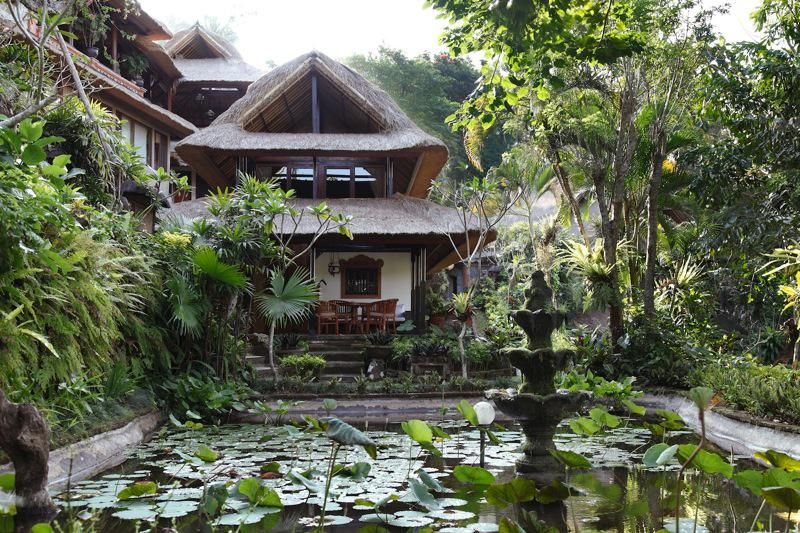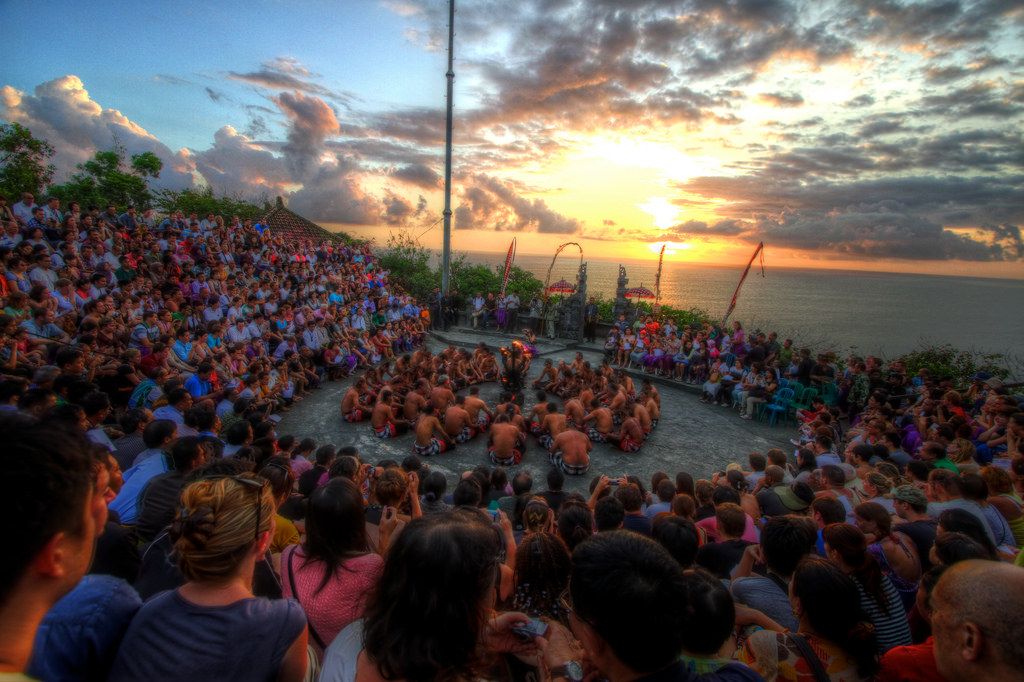Nestled above the confluence of two sacred rivers, the Campuhan and the Oos, Hotel Tjampuhan in Ubud might just be a history buff’s version of paradise.
Established in 1928 by the king of Ubud to provide an abode to guests of the royal family, the hotel was once the haunt of Walter Spies, a Russian-born German artist who helped to establish Bali’s modern art scene in the 1920s and 30s.

“The king invited Walter Spies to build a house on his land, and in return asked him to inspire Balinese artists to use more dynamic painting techniques and become more experimental in their subject choices,” says Suarsa, Tjampuhan’s corporate director of sales.
Today, the historic two-story house and former studio sits alongside a number of more-recently built bungalows that contain 66 Balinese-style rooms. The charming timber house, which overlooks a picturesque lotus pond, is also available for rent. “While we have done some structural work to the house, it has been mostly left in its original state,” Suarsa says.
The house is where, in 1934, prince Tjokorda Gde Agung Sukawati, Walter Spies and the Dutch artist Rudolf Bonnet founded Pita Maha, an association that promoted the talent of Balinese artists and eventually brought them international recognition. Pita Maha encouraged artists to step outside the confines of traditional paining—traditionally Balinese paintings were two-dimensional and statues static—by exploring various paining techniques and subjects other than Hindu motives.
Arriving in Bali after a stint as a conductor for Yogyakarta’s European orchestra, Spies is mostly remembered in Indonesia for the paintings he produced on the island. In fact, many of his atmospheric pieces have encouraged the Western notion of Bali as a tropical paradise. Suarsa is quick to point out that all the Walter Spies paintings that grace the walls of the Tjampuhan are reproductions, as it would be too risky to keep the real deal at the hotel.
And while Spies is mostly remembered for his painting, he was also an avid photographer, filmmaker and a musician. In 1932, Spies collaborated on a film “Islands of Demons,” which one could say introduced the West to Balinese culture. Interestingly, during the making of the film, Spies choreographed a new version of a traditional Balinese chant “chak-a-chak-a-chak,” which led to the creation of kecak, a Balinese-style dance performed just for tourists.

Over the years, the former center of Bali’s creative activity hosted a number of famous personalities such as the British comic actor Charlie Chaplin, who visited Bali in the 1930s where he was supposedly planning to film a satire on colonialism (the film would have been the actor’s first talkie – film with speech made during a period when most films were silent).
While guests can obtain some basic information about the hotel’s history on its website, few realize that the Tjampuhan is the second guesthouse that opened on the island—technically it did not open as a public hotel until the 1970s. “The first one was the Natour Bali Hotel in Denpasar, which was built in 1927 to provide accommodation for Western visitors,” according to Suarsa.


Today, the Tjampuhan offers a choice of tastefully decorated rooms overlooking the hotel’s verdant gardens, two swimming pools (one a natural spring pool), two restaurants, a pool-side bar and spa in a sunken stone grotto. If you really want to enjoy Ubud you have to close your eyes, says Suarsa. The Tjampuhan might just be the perfect place to do this.





Reader Interactions